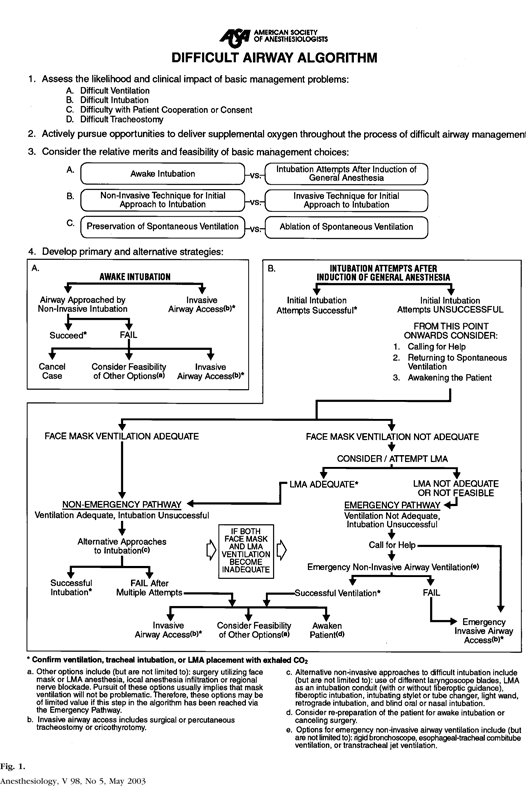So that's pretty much all I was saying. Hence why you can't apply all the Anesthesia rules & methods in the ED. While some may very well be applicable (the basics never change), there are other constraints & limitations that make other rules & methods inapplicable & unrealistic in the ED environment.
Because as mentioned above, the algorithm calls for things like LMAs, doing cases under MAC, and awake intubations. That's not what we're dealing with in the ED. Here's the algorithm I'm referring to:
I think maybe I wasn't clear in my earlier response. You're referring to an ED doc's backup/rescue devices (and what some of us may call OUR ED difficult intubation algorithm). My earlier comment was in response to the Anesthesiologist's comment, so I was speaking in terms of HIS Difficult Intubation Algorithm (the flowshart above), which again, is VERY different than our stepwise approach, and has options not applicable to the ED at all. My simple point was, you can't take stuff like that and just say "well you shoulda gone down that pathway in the ED" cuz it's not MADE for the ED, and much of it isn't an option & doesn't apply.
And I agree with you 100% that we should have bougies, LMAs, and some version of video-assisted intubation (I'm a big fan of the C-MAC because it has all the features of the Glidescope but is a MUCH better educational tool as well).
Hopefully that clears up what I was trying to say.



